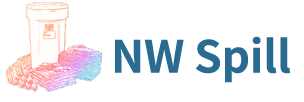Oil spills in the ocean are environmental catastrophes that capture global attention. Images of oil-slicked waters, struggling wildlife, and blackened shorelines starkly illustrate the devastating impact of these events. As a leading manufacturer of oil absorbent materials, NW Spill understands the critical importance of effective spill response. This guide explores the causes, consequences, and – most importantly – the scientifically-backed methods for mitigating oil spills in marine environments.

Why Do Ocean Oil Spills Happen?
While major tanker accidents make headlines, the sources are diverse:
- Tanker Accidents & Groundings: Collisions, hull breaches, or running aground.
- Offshore Platform Failures: Blowouts, pipeline ruptures, or leaks from drilling rigs.
- Pipeline Leaks: Subsea or coastal pipelines can corrode or suffer damage.
- Shipping Operations: Bilge water discharge, fuel transfer mistakes, or tank cleaning.
- Natural Seepage: Oil naturally leaking from the seabed (though generally slower and less concentrated).
The Devastating Impact: A Fragile Ecosystem Under Siege
The consequences ripple through the marine world:
- Wildlife Mortality: Oil coats fur and feathers (seabirds, otters, seals), destroying insulation and leading to hypothermia or drowning. Ingestion while preening or feeding causes internal damage and poisoning. Marine life like fish, plankton, and coral suffer toxicity and suffocation.
- Habitat Destruction: Coastal marshes, mangroves, and seabeds are smothered, killing vital plants and invertebrates that form the base of the food chain. Recovery can take decades.
- Economic Damage: Fisheries collapse, tourism plummets, and coastal property values suffer. Cleanup costs run into billions.
- Long-Term Toxicity: Residual oil components (PAHs) persist for years, causing chronic health problems in marine organisms and potentially entering the human food chain.
Confronting the Crisis: Key Oil Spill Response Strategies
A rapid, multi-pronged approach is essential:
- Containment: The First Line of Defense
- Booms: Floating barriers deployed around the spill source or sensitive areas to contain and concentrate the oil, making recovery easier. Types include: fence, curtain, and inflatable booms.
- Skimming: Using specialized vessels (“skimmers”) to remove contained oil from the water surface. Effectiveness depends on sea state and oil viscosity.
- Physical Removal: Recovering the Oil
- Skimmers: As above, mechanical, weir, or oleophilic skimmers separate oil from water.
- Sorbents:This is where high-performance materials play a crucial role. Oil absorbents (like those manufactured by NW Spill) are hydrophobic and oleophilic materials designed to rapidly soak up and retain oil while repelling water. They are critical for:
- Final “polishing” after skimming.
- Treating sheens and thin slicks.
- Protecting shorelines and sensitive areas (used in booms, pads, sweeps, or loose granules).
- Cleaning oiled wildlife and equipment.
- Advantages: Highly selective, versatile (pads, rolls, booms, pillows, loose), effective on various oil types, minimize recovered waste volume.
- In-Situ Burning: Igniting contained fresh oil slicks under controlled conditions. Effective for thick slicks but produces air pollution and is weather-dependent.
- Chemical Dispersants: Surfactants sprayed from aircraft or vessels break oil into tiny droplets dispersed into the water column. Controversial due to potential toxicity to marine life and uncertainty about the long-term fate of dispersed oil. Used primarily in deep water far from shore.
- Shoreline Cleanup: Labor-intensive methods like manual removal, pressure washing (hot/cold), vacuum trucks, and bioremediation (adding nutrients to stimulate oil-eating bacteria). Sorbents are vital here for spot cleaning and protecting sensitive habitats.
Why High-Quality Oil Absorbents Are Indispensable
In the complex toolbox of spill response, advanced oil absorbents offer unique advantages, especially for marine environments:
- Water-Rejection: Truly effective marine absorbents must float and absorb only oil, not water. This maximizes oil recovery efficiency and minimizes disposal weight/cost.
- High Capacity & Retention: Superior absorbents hold many times their weight in oil and retain it, even when lifted from the water, preventing re-leaching.
- Versatility & Speed: Available in numerous forms (pads, rolls, booms, sweeps, pillows, loose) for rapid deployment in diverse scenarios – open water, harbors, sensitive shorelines, wildlife cleaning stations.
- Environmental Safety: Premium absorbents are inert, non-toxic, and designed for safe disposal or even regeneration in some cases.
- Proactive Protection: Absorbent booms are routinely deployed before potential spills during fuel transfers or around sensitive intakes as a preventative measure.
The NW Spill Commitment: Engineering Solutions for a Cleaner Ocean
At NW Spill, we understand that effective oil spill response hinges on reliable, high-performance tools. We go beyond manufacturing standard absorbents. Our expertise lies in:
- Material Science: Continuously developing and refining hydrophobic/oleophilic materials for superior absorption speed, capacity, and selectivity in challenging saltwater conditions.
- Product Range: Offering a comprehensive suite of marine-grade absorbents – from open-ocean booms to shoreline pads and granular options.
- Expertise: Providing technical guidance on optimal absorbent selection and deployment strategies for various spill scenarios.
- Sustainability Focus: Exploring and promoting solutions that minimize secondary waste and environmental impact.
Conclusion: Vigilance, Preparedness, and Advanced Technology
Oil spills in the ocean remain a severe threat. While prevention through stringent regulations and safety practices is paramount, preparedness is non-negotiable. A robust response plan, incorporating containment, skimming, dispersants (where appropriate), and crucially, high-efficiency oil absorbents, provides the best defense against environmental devastation.
Choosing the right absorbent technology is not just a procurement decision; it’s an investment in faster recovery, reduced ecological damage, and lower overall cleanup costs. By leveraging advanced materials and proven methodologies, we can collectively work towards mitigating the impact of these black tides and protecting our vital oceans.
Facing marine oil spill challenges? Explore NW Spill’s engineered solutions designed for maximum efficiency and environmental responsibility.
